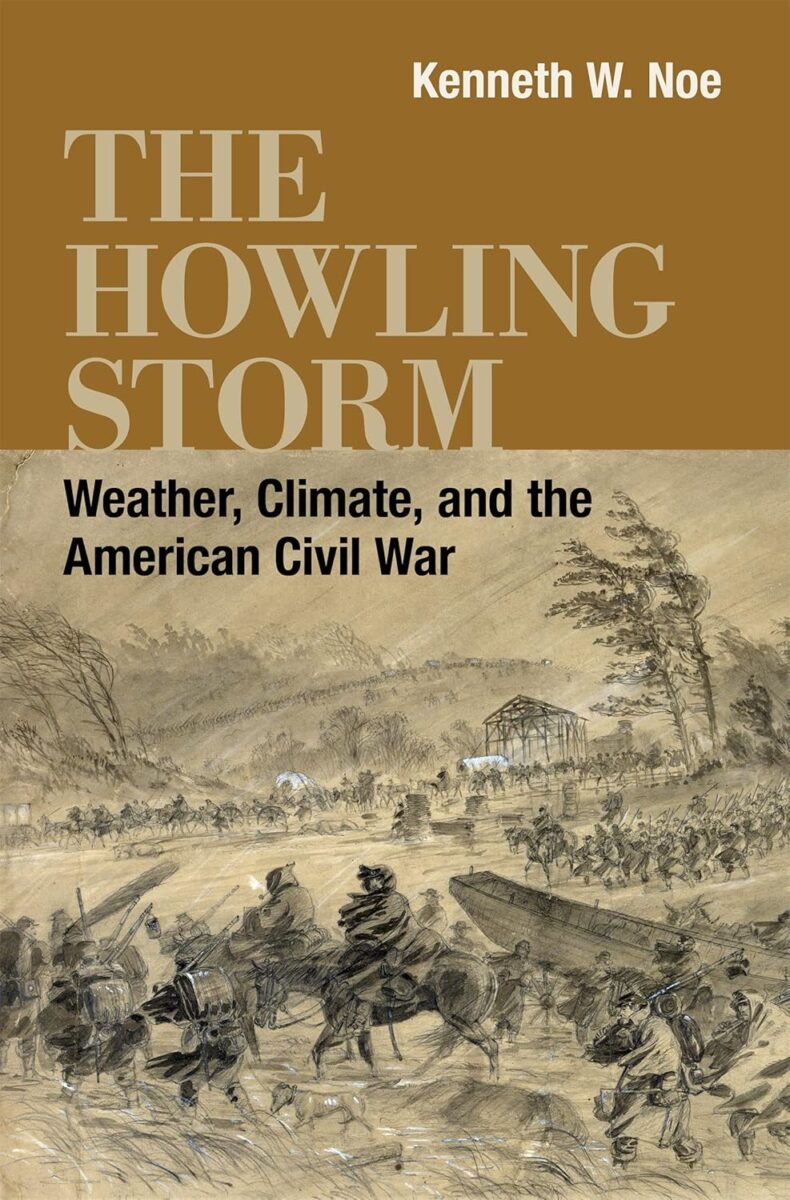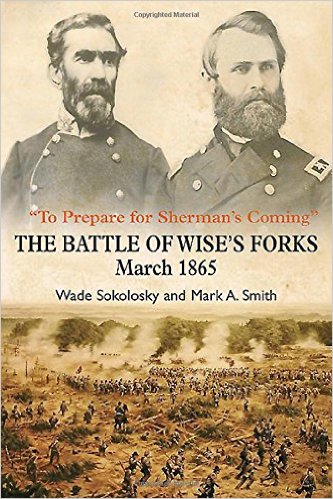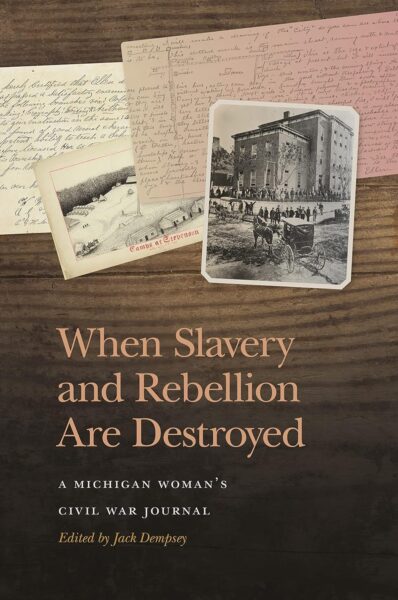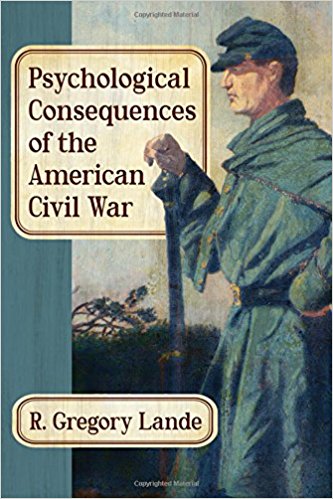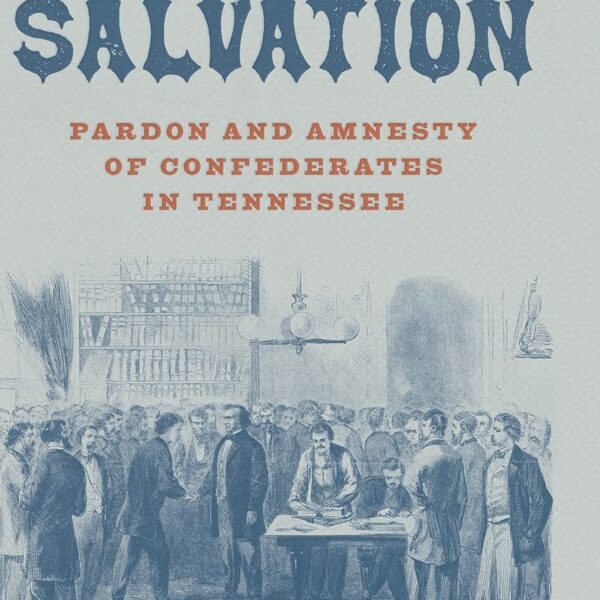The Civil War was fought outside. This seems like an obvious fact, but it has an important, though often overlooked implication. Because the war was fought outside, humans were not the only participants. The natural world was just as influential in shaping the war’s trajectory. Environmental factors such as mud, snow, drought, and thirst, created hardships and advantages for campaigning armies. And yet, their significance remains invisible in the scholarship. Kenneth W. Noe’s The Howling Storm: Weather, Climate, and the American Civil War attempts to rectify this oversight. By highlighting the important climatological and meteorological events that took place in the United States between 1861 and 1865, Noe merges environmental history with a traditional military narrative of the Civil War. The result is a meticulously researched and exhaustive tome that offers a fresh perspective on a familiar subject.
The Howling Storm is not the first attempt to blend the Civil War with environmental history. Noe’s work fits alongside other important scholarship, such as Lisa Brady’s War Upon the Land: Military Strategy and the Transformation of Southern Landscapes During the American Civil War [2012], Brian Allen Drake’s The Blue, the Gray, and the Green: Toward an Environmental History of the Civil War [2015], Erin Stewart Mauldin’s Unredeemed Land: An Environmental History of the Civil War and Emancipation in the Cotton South [2018], and Judkin Browning and Timothy Silver’s An Environmental History of the Civil War [2020].
Noe’s work is, however, the first to focus exclusively on weather and climate. “Civil War weather did not kill millions,” he writes, “but it was out of the ordinary” (7). Unusual weather patterns derived from the El Niño-Southern Oscillation phenomenon meant that regions within the United States fluctuated dramatically between famine and flood. Nineteenth-century Americans, of course, wrote about these events, but The Howling Storm places them within the larger climatic pattern. Doing so, Noe argues, not only returns the war to its natural environment, but likewise exposes the extent to which weather and climate altered the war’s course.
Noe’s book is comprised of twenty-four chapters, arranged chronologically and geographically. This is significant because modern climatologists have divided the United States into distinct climate zones. By the author’s estimation, the Civil War involved at least five separate zones. As such, trans-Mississippi armies, western armies, and eastern armies all operated within a unique set of climate patterns. Furthermore, while Civil War armies and southern civilians often inhabited the same climate zones, most of the northern civilian population lived in a separate zone. As a result, factors like food production, transportation, winter quarters, and combat varied between regions. For example, much of the “Hot-Humid” and “Mixed-Humid” climate zones that made up the southern United States was plagued by drought in 1862, 1863, and 1864. This undermined Confederate food production; consequences for northern farms were less severe. Yet while each climate zone represented distinct patterns, seasonal changes had the potential to unify some experiences across the regions. The summer heat and dust plagued Union and Confederate soldiers on the battlefield at Manassas, caused the federal army’s collapse outside of Wilson’s Creek in Missouri, and slowed General Don Carlos Buell’s march to Chattanooga.
Through his analysis of Civil War weather, Noe challenges several popularly held conceptions. Most notably, The Howling Storm offers new insight into the tensions between General George B. McClellan and Abraham Lincoln. While many historians characterize McClellan’s sluggish movements as a sign of reluctance, Noe suggests that they were appropriate given the environmental conditions experienced by the Army of the Potomac. “While historians have depicted Lincoln as an untutored military genius,” Noe observes, “he never really understood logistics or the realities of moving armies in bad weather” (494). McClellan, by contrast, did. As a result, he routinely adapted his orders to accommodate the weather until forced to do otherwise.
Additionally, Noe’s intention is to follow “modern environmental historians in assigning agency to the environment and treating climate and weather as a sort of third army” (1). Thus, The Howling Storm routinely demonstrates that weather was often a greater threat to Civil War armies than the opposing force. Exposure to extreme conditions deprived campaigning soldiers of sleep, food, and water. It slowed their advances, undermined their retreats, and placed additional burden on bodies already under duress. Interestingly enough, Noe concludes that, “over and over, weather defied expectations and favored the Union cause—and perhaps even more—emancipation” (493). Despite the fact that initial conditions seemed to favor the Confederacy, the North more readily adapted to the challenges produced by the era’s unreliable weather and climate.
All of this said, The Howling Storm offers a traditional narrative of the battlefield and home front. The author is quick to point out that his work does not involve politics or a detailed analysis of race and gender. It does not consider the relationship between weather, climate, and emancipation; nor does it investigate the lives of civilians, prisoners of war, or military animals. These topics are left for the next scholar. Nevertheless, weighing in at 688 pages, The Howling Storm is a magnum opus that successfully challenges historians to rethink all they have ever known of the war.
Lindsay R. S. Privette is an assistant professor of history at Anderson University.
